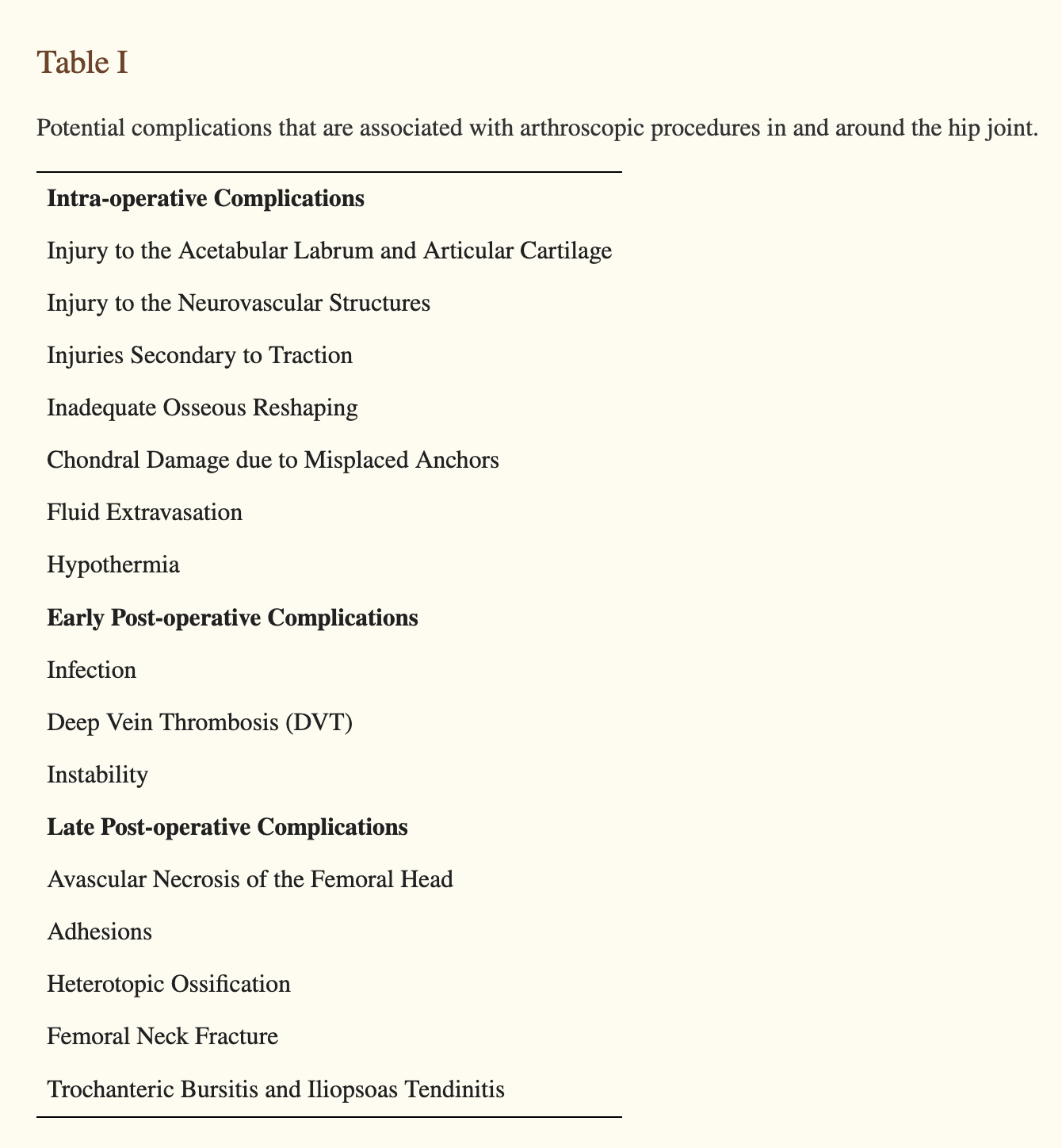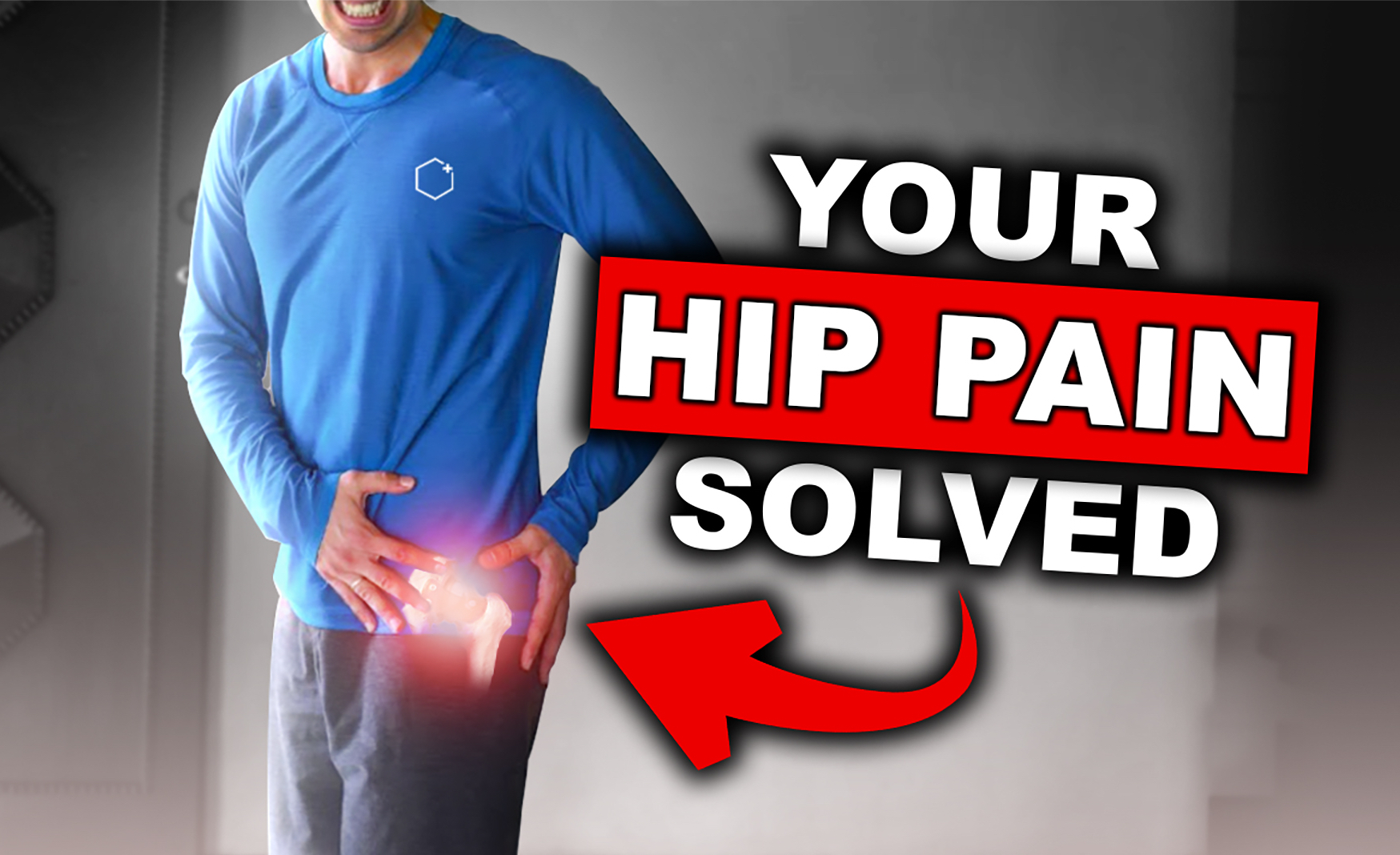FAI HIP SURGERY: The 46% Success Rate That Will Shock You

Introduction to Surgery for Femoroacetabular Impingement Syndrome (FAIS)
Imagine you're about to make an important decision, and the outcome is as uncertain as a coin flip.
This is the shocking truth revealed in 1 recent study about hip arthroscopy for Femoroacetabular Impingement Syndrome (FAIS).
Hip arthroscopy for Femoroacetabular Impingement Syndrome (FAIS) is on the rise. But does everyone who gets the surgery achieve an acceptable symptom state (Patient Acceptable Symptom State [PASS])? A fascinating cross-sectional study, "How Many Patients Achieve an Acceptable Symptom State After Hip Arthroscopy for Femoroacetabular Impingement Syndrome?" has the answers.
Check the study out here. Want a video version? See the video at the top of this page! Let's dive in!
Understanding Femoroacetabular Impingement Syndrome (FAIS)

Pain is complex (see image above), and FAIS is a complex pain condition.
FAIS consists of a combination of specific symptoms, clinical signs, and bony deformities. The symptoms include hip/groin pain aggravated by activity or sitting, commonly with referral to the buttocks, thighs, or knees. People also frequently report “clicking, catching, locking, stiffness." People also often show decreased range of motion (ROM), especially flexion and internal rotation, and positive impingement tests (FABER, FADIR, etc.)
To be called FAIS, a person must have "bad bones" AND clinician signs and symptoms. The combination of bone morphology, muscle tightness, lack of mobility, and lack of motor control can result in pain, discomfort, and even osteoarthritis if not handled mindfully and systematically.
Besides biomechanical factors, there are a constellation of other factors that contribute to pain (see image above).
However, most doctors and surgeons still only focus on 1 thing: the bones.
Unfortunately, the results of such a myopic focus aren't good...
The Shocking 46% Success Rate of FAI Surgery

Many people are led to believe that FAIS is solely a bone problem, leading them to opt for surgery prematurely. Often, they are pushed into this decision by surgeons who say surgery "has a 90% success rate." (Yes, someone actually told me that's what their surgeon said.)
However, according to the study being examined today, only 46% of patients reported an acceptable symptom state after surgery, as measured by the Patient Acceptable Symptom State (or PASS score).
In this study, researchers looked at a group of patients who had undergone hip arthroscopy surgery and were part of the Danish Hip Arthroscopy Registry. Scientists used a survey to collect information from these patients about their hip function, pain, and overall quality of life. This survey was done 12 to 24 months after the surgery (which should be enough time for the surgery to prove successful or not).
The researchers asked the patients if they felt that the surgery had made a significant improvement in their condition (the PASS score). As mentioned before, only 46.7% of these people reported that they felt the surgery led to a significant improvement in their condition. Yikes.
And, if you’re an athlete, the news is even worse…
The researchers ALSO reported that only 40.4% of people were happy with their symptom state as it relates to their ability to participate in their chosen sports. This gloomy statistic was measured in the PASSsport questionnaire.
Finally, to drive the stake in the heart of surgery for FAIS, the researchers cite other similar studies with similar results.
In the researcher's own words, they say:
“The proportion of patients with a PASS in the present study (46.7%) is similar to a recent multicenter RCT showing that 48% allocated to hip arthroscopy achieved the PASS cutoff score…at the 8-month follow-up. Similar to the study from Palmer et al., our study included a general population with FAIS from multiple hip arthroscopy centers, indicating that the percentage of patients achieving PASS in a general population is likely about 50%.
Aka, no better than a coin flip...
The Impact and Side Effects of Hip Surgery

While surgery can benefit some, it isn't guaranteed for everyone.
The study shows that outcomes can vary, and it's essential to weigh the potential benefits against the risks carefully. Surgery may be a viable option for some people, but it's important to understand that success is not guaranteed, and there are potential side effects.
Potential complications after the surgery include infection (at the incision site or within the joint), nerve damage, hemarthrosis (excessive bleeding into the joint), blood clots, avascular necrosis (bone death due to lack of blood supply), and potential failure to fully alleviate pain.

The point of sharing the known side effects of surgery is not to scare you.
Simply, it is to help you be aware of these possible outcomes, which are often not mentioned by Doctors and surgeons who's livelihood depends on doing surgeries.
That's why they gloss over these complications and instead use language like:
"We're just going to clean up the joint..."
"We'll have you in and out in the same day..."
"We'll just do a little manipulation of the joint...(aka extreme traction)"
Meanwhile, this is what surgery actually looks like:
If the video above doesn't make it immediately clear...
...this is not as simple as "plugging in a new LEGO hip," and you are good to go! This is hip trauma.
That's why It's important to understand that while these statements may make surgery sound much easier than it is, there are potential risks and side effects, and it is an intense procedure. Therefore, all factors should be discussed with your surgeon prior to any procedures being carried out.
The bottom line is this: the study being reviewed today shows that there is significant variation among treatment outcomes in the FAIS population. This highlights the importance of individualized treatment plans rather than a “one-size-fits-all” approach.
Each patient should be given the opportunity to discuss their case with a variety of specialists to get a well-rounded perspective.
Alternatives to Hip Surgery (Physical Therapy & VIP Mentorship)

Physical therapy is one option to explore, but finding the right practitioner can be challenging...
Sadly, I only found 1-2 really good, really helpful practitioners in all that time. And I ended up spending over $26,000 desperately searching for answers.
Fortunately, my story has a happy ending...
I’m grateful that 14+ years later, I’m pain-free, flexible, and strong - without having ever had the surgery. But it took a burning obsession to heal myself and lots of trial and error.
14+ years later, I’m sharing what I learned with others and helping them heal their hips without a coin-flip surgery.
At GotROM, we offer The VIP Mentorship, an intensive and effective program for individuals with FAIS. For those who cannot join our coaching, we provide other resources to help you find excellent physical therapists to assist you in your healing journey.
Making the "Hip Surgery vs. No Surgery" Decision
Before considering surgery, exhausting less invasive and non-surgical options is essential. Take the time to explore at-home programs like The Hip Fix or seek personalized 1-on-1 support through gotrom.com/vip. Remember, you can make an informed choice about your health.
Conclusion
FAI hip surgery is not a guaranteed solution, and its success rate can be as uncertain as a coin flip. Educate yourself on all available options, weigh the risks and benefits, and consider less invasive alternatives before deciding. Your well-being is worth the careful consideration of all possibilities.
And remember, you're just one step away from building or re-building your perfect body!
About The Author

Shane Dowd, CES, CMP is the owner/founder of GotROM.com. He is also a sports performance & mobility coach specializing in injury prevention and flexibility for athletes.










